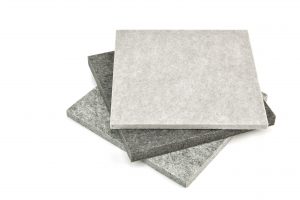Achieving 100% soundproofing is a challenging task due to various factors. Even with the best soundproofing materials and techniques, it is almost impossible to completely eliminate all sound transmission.
Challenges in Achieving 100% Soundproofing

One of the main challenges is the structure of the building itself. Sound can easily travel through walls, floors, and ceilings. Any gaps or cracks in the structure can allow sound to pass through, making it difficult to achieve complete soundproofing.
Another challenge is the type of noise that needs to be blocked. Low-frequency sounds, such as bass and drums, are particularly difficult to block as they can penetrate through solid objects. High-frequency sounds, on the other hand, can be blocked more easily with the right materials.
The choice of sound proofing materials is also crucial in achieving 100% soundproofing. While some materials may block certain frequencies, they may not be effective against others. Additionally, the cost of high-quality soundproofing materials can be prohibitive for some people.
Finally, even with the best soundproofing methods, there may still be some sound leakage. This can be due to factors such as doors and windows, which are difficult to soundproof completely.
In summary, achieving 100% soundproofing is a difficult task due to various factors such as building structure, type of noise, choice of materials, and sound leakage. While it may be possible to significantly reduce noise transmission, complete soundproofing is almost impossible to achieve.
Advanced Soundproofing Technologies
Active Noise Cancellation
Active Noise Cancellation (ANC) is an advanced technology that uses a microphone and a speaker to cancel out unwanted noise. The microphone picks up the sound waves, and the speaker produces a sound wave that is 180 degrees out of phase with the original sound wave. When these two waves meet, they cancel each other out, resulting in silence. This technology is commonly used in headphones and earbuds to cancel out external noise, but it can also be used to soundproof a room.
ANC works best on low-frequency sounds, such as traffic noise or the hum of an air conditioner. It is less effective on high-frequency sounds, such as voices or music. However, when used in combination with other soundproofing techniques, ANC can significantly reduce the amount of noise that enters or leaves a room.
Case Studies and Real-world Applications
Sound proofing a room to 100% is a challenging task, but it is not impossible. Several case studies and real-world applications have shown that it is possible to achieve a high level of soundproofing.
Case Study 1: The Music Studio
A music studio in London was facing complaints from neighbours about the noise levels. The studio decided to soundproof the room to reduce the noise levels. The studio used a combination of sound-absorbing materials, sound barriers, and soundproof doors and windows. The studio also installed a ventilation system that did not compromise the soundproofing.
The result was a significant reduction in noise levels, and the neighbours stopped complaining. The music studio was able to continue its operations without any further issues.
Case Study 2: The Home Cinema
A homeowner in Manchester wanted to create a home cinema in the basement of their house. The homeowner was concerned about the noise levels and wanted to soundproof the room.
The homeowner used a combination of sound-absorbing materials, sound barriers, and soundproof doors and windows. The homeowner also installed a ventilation system that did not compromise the soundproofing.
The result was a home cinema that had no noise leakage, and the family could enjoy movies without disturbing the rest of the house.
Real-world Application: The Recording Studio
Recording studios require a high level of soundproofing to ensure that there is no noise leakage. The Abbey Road Studios in London is a prime example of a recording studio that has achieved a high level of soundproofing.
The studio used a combination of sound-absorbing materials, sound barriers, and soundproof doors and windows. The studio also installed a ventilation system that did not compromise the soundproofing.
The result was a recording studio that has been used to record some of the most iconic albums in history, including The Beatles’ Abbey Road.
In conclusion, soundproofing a room to 100% is possible with the right combination of sound-absorbing materials, sound barriers, and soundproof doors and windows. Real-world applications and case studies have shown that it is possible to achieve a high level of soundproofing.
